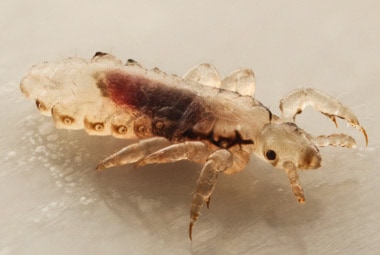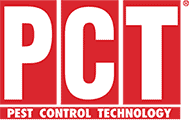
Human lice can be found throughout the United States and worldwide. There are three types of human lice and their common name is derived from the areas of the body they infest. They are head lice, body lice and pubic lice. The body lice are the only ones that are vectors of human diseases.
| Pest Identification | |
|---|---|
| Recognition | All human lice are very small with the pubic lice being the smallest and measuring only 1/16th inch in length. The head and body lice are closer to 1/8th inch. The pubic louse is sometimes called a crab louse due to resembling the shape of an ocean crab. However, recognition of the type of lice is often simply the result of the location of the body in which they are found. |
| Biology | According to the Centers for Disease Control and Prevention, the life cycle of the head louse has three stages: egg, nymph, and adult. Head lice eggs are called nits and are hard to see, often becoming confused with dandruff and dry hair spray flakes. The nits are found glued to the hair shaft very near the scalp. The eggs take approximately one week to hatch into a tiny nymph about the size of a pinhead. After three molts, the nymph will mature into an adult 7 days after hatching from the nit. The life cycle of the body louse is the same as the head louse. They can be found on hair shafts anywhere on the human body but most often inside the seams of clothing. Adult body lice can feed on blood several times a day. The body louse will die within a couple of days without blood meals. As with the head louse and body louse, the life cycle of the pubic louse consists of three stages: egg, nymph, and adult. Adult pubic lice are only found on human bodies and require blood to survive. The pubic lice are transmitted from person to person during sexual activity. Transmission can also take place from clothing or bedding to another human host. |
| Habits | The type of lice involved identifies the activity or habits of human lice. Head lice, for example, are only found on the head and will live there continually unless disturbed or knocked loose from scratching, combing hair or attaching to one’s hat. Transmission of head lice usually occurs when there is direct contact of two heads or sharing combs, brushes or hats. Body lice will venture off the body and can be found on clothing and bedding. Occasionally, body lice can be seen on the human body while feeding. Body lice are also known to transmit diseases such as typhus, trench fever and louse-borne relapsing fever. Pubic lice are normally found in the genital area on pubic hair. The can also be found on other body hair such as on legs, armpits, beard or eyebrows. Pubic lice are most often transmitted through sexual contact. |
| Prevention | There are several things one can do to prevent exposure to head lice. Do not share any hats, scarves, brushes, combs hair ribbons or any other item that is normally exposed to the head. Avoiding head to head contact at school, slumber parties and playgrounds will help prevent exposure. Prevention and control of body lice consists of regular bathing and properly laundering of clothes and bedding. Use hot water and high-temperature drying cycle when laundering infested clothing and bedding. Never share clothing, beds or towels that may have been used by an infested person. Pubic lice are most commonly spread from person to person by sexual contact. Rarely will transmission occur from clothing, bedding or toilet seats. Sexual contact with an infested person must be avoided until infected partner has been treated, examined and declared to be free of lice. Regular shampooing and bathing of the body and proper laundering of clothing and bedding will create an environment that is not inviting to human lice. Additional care and examination is recommended for those who frequent public places such as schools and other areas where there may be outbreaks of lice. |
| Professional | The control of head, body and pubic lice is only performed or treated medically and through personal hygiene of the human body and laundering of clothing and bedding. Any louse that becomes dislodged from the human host will not survive for extended periods of time. Professional treatment of insecticides is not necessary and should not be applied for control of human lice. Contact a medical professional for practical information on controlling human lice. |

